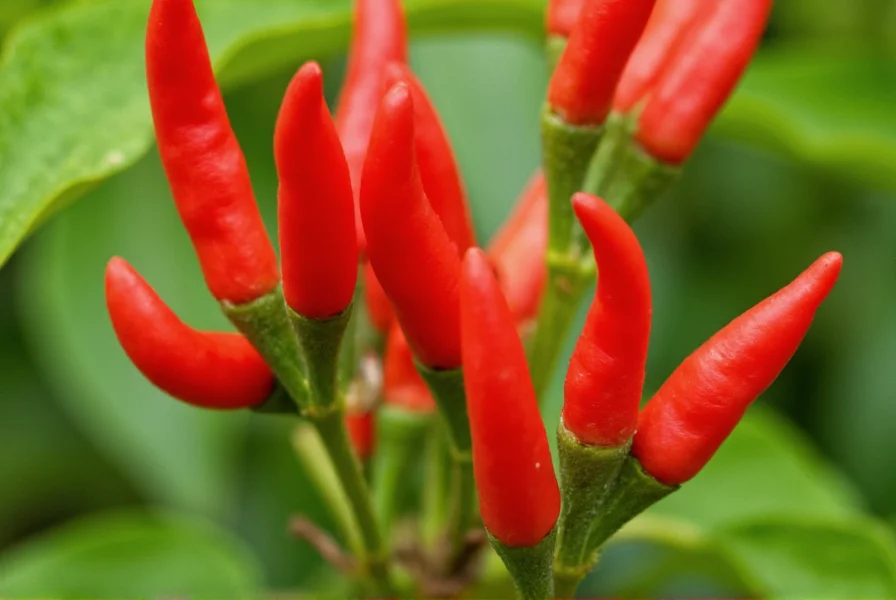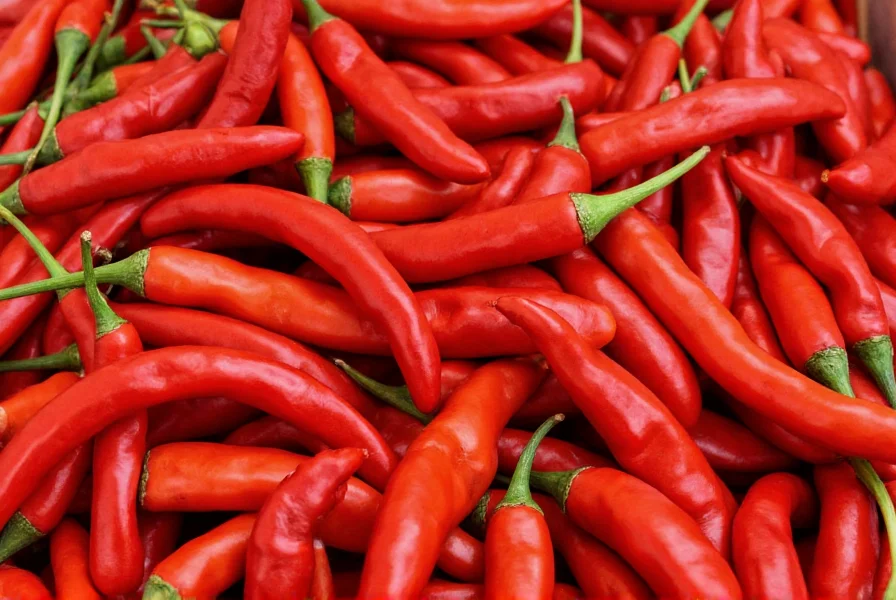Cayenne chili pepper has become a staple in kitchens and wellness routines worldwide, but understanding its true characteristics separates casual users from informed enthusiasts. This comprehensive guide explores the science-backed facts about this fiery ingredient, moving beyond common misconceptions to deliver practical knowledge you can trust.
Botanical Background and History
Scientifically classified as Capsicum annuum, cayenne pepper belongs to the nightshade family (Solanaceae) alongside tomatoes and eggplants. Despite its association with Cajun cuisine, cayenne actually originated in what is now Bolivia and Peru, where archaeological evidence shows domestication dating back 6,000 years. Portuguese explorers introduced it to Europe and Asia in the 15th century, where it quickly integrated into local cuisines.
Unlike bell peppers which lack capsaicin, cayenne contains significant amounts of this compound primarily concentrated in the white pith and seeds. The name "cayenne" comes from the city of Cayenne in French Guiana, though the pepper wasn't originally cultivated there.
Physical Characteristics and Heat Profile
Cayenne peppers typically measure 2-5 inches long with a slender, tapered shape that transitions from green to vibrant red as they mature. Their heat level ranges from 30,000 to 50,000 Scoville Heat Units (SHU), placing them significantly hotter than jalapeños (2,500-8,000 SHU) but milder than habaneros (100,000-350,000 SHU).
| Pepper Variety | Scoville Heat Units | Relative Heat Comparison |
|---|---|---|
| Cayenne | 30,000-50,000 | 10-20x hotter than jalapeño |
| Jalapeño | 2,500-8,000 | Baseline for comparison |
| Serrano | 10,000-23,000 | 2-3x hotter than jalapeño |
| Habanero | 100,000-350,000 | 20-40x hotter than jalapeño |
The heat sensation from cayenne develops quickly but doesn't linger as long as some hotter varieties. Its flavor profile includes grassy, slightly fruity notes beneath the heat, making it more versatile than many assume when using fresh cayenne peppers in cooking.

Nutritional Composition and Health Considerations
A single tablespoon (5g) of cayenne pepper contains:
- 17 calories
- 3% of daily vitamin C
- 5% of daily vitamin A
- 2% of daily iron
- Significant capsaicin content (0.1-1%)
Research on cayenne pepper health benefits shows promising but nuanced results. Capsaicin, the compound responsible for heat, may support metabolism and pain relief through its interaction with TRPV1 receptors. A 2022 review in Nutrients journal noted that dietary capsaicin shows potential for modest metabolic benefits, though effects on cayenne pepper for weight loss specifically remain inconclusive in human studies.
Important safety considerations:
- Topical application can cause skin irritation - always wash hands after handling
- Consumption may trigger heartburn in sensitive individuals
- Not recommended for people with active ulcers or GERD
- Consult a healthcare provider before using for cayenne pepper medicinal uses
Culinary Applications and Flavor Pairing
Cayenne's versatility extends far beyond simply adding heat. When used thoughtfully, it enhances rather than overwhelms dishes. Professional chefs recommend:
- For balanced heat: Remove seeds and white membranes where most capsaicin concentrates
- Flavor pairing: Complements chocolate, citrus, honey, and smoked flavors
- Cooking technique: Add early for integrated heat, late for brighter, sharper spice
- Preservation: Dries exceptionally well for year-round use
Understanding how hot is cayenne pepper compared to alternatives helps in recipe substitution. It's substantially hotter than paprika but less intense than ghost peppers. When comparing cayenne pepper vs red pepper flakes, note that commercial red pepper flakes often contain multiple pepper varieties with inconsistent heat levels, while pure cayenne offers more predictable results.

Selecting and Storing Cayenne Peppers
Fresh cayenne peppers should feel firm with smooth, shiny skin. Avoid those with wrinkles, soft spots, or discoloration. For optimal shelf life:
- Refrigeration: Store in a paper bag in the crisper drawer for up to 2 weeks
- Freezing: Chop and freeze in oil for cooking applications
- Drying: String peppers and hang in a warm, dry place for 2-3 weeks
- Ground pepper: Keep in an airtight container away from light for 6-12 months
When growing cayenne peppers at home, they thrive in warm climates with full sun and well-draining soil. Most varieties mature in 70-80 days from transplanting. Container gardening works well for those in cooler climates - just ensure plants receive at least 6 hours of direct sunlight daily.
Common Misconceptions About Cayenne Pepper
Several myths persist about this popular spice:
- Myth: Cayenne pepper raises body temperature significantly
- Fact: It creates a sensation of heat but doesn't substantially alter core body temperature
- Myth: All cayenne peppers have identical heat levels
- Fact: Heat varies based on growing conditions, soil, and specific cultivar
- Myth: Cooking destroys all capsaicin
- Fact: Capsaicin is heat-stable; cooking redistributes but doesn't eliminate it
Frequently Asked Questions
What's the difference between cayenne pepper and red pepper flakes?
Cayenne pepper is a single pepper variety ground into powder, while red pepper flakes typically contain a blend of dried peppers including cayenne, but also others like serrano or jalapeño. Cayenne provides more consistent heat (30,000-50,000 SHU) compared to the variable heat of red pepper flakes.
Can cayenne pepper help with weight loss?
Some studies suggest capsaicin in cayenne may temporarily boost metabolism and reduce appetite, but effects are modest. A 2022 review in Nutrients journal found capsaicin might increase calorie burning by about 50 calories daily - not a significant weight loss solution on its own.
How should I handle cayenne pepper safely?
Always wear gloves when handling fresh cayenne peppers, especially when cutting. Avoid touching your face, particularly eyes. If skin contact occurs, wash with soap and cool water - milk or yogurt can help neutralize the burn. Never use hot water as it spreads capsaicin.
What are the nutritional benefits of cayenne pepper?
Cayenne pepper provides vitamin A (from beta-carotene), vitamin C, and potassium. One tablespoon contains about 3% of daily vitamin C and 5% of vitamin A. Its primary bioactive compound, capsaicin, shows potential anti-inflammatory properties in research studies.











 浙公网安备
33010002000092号
浙公网安备
33010002000092号 浙B2-20120091-4
浙B2-20120091-4